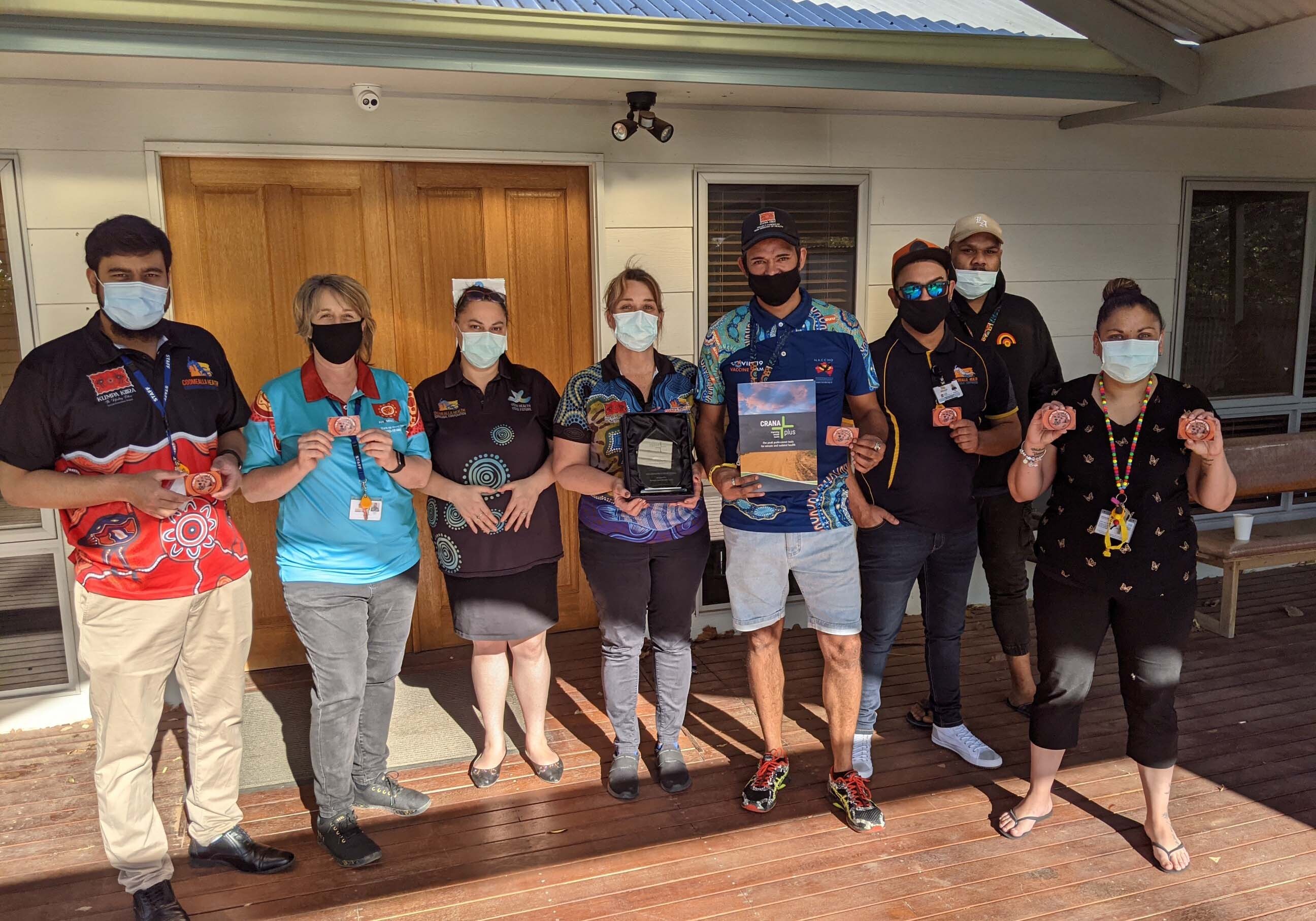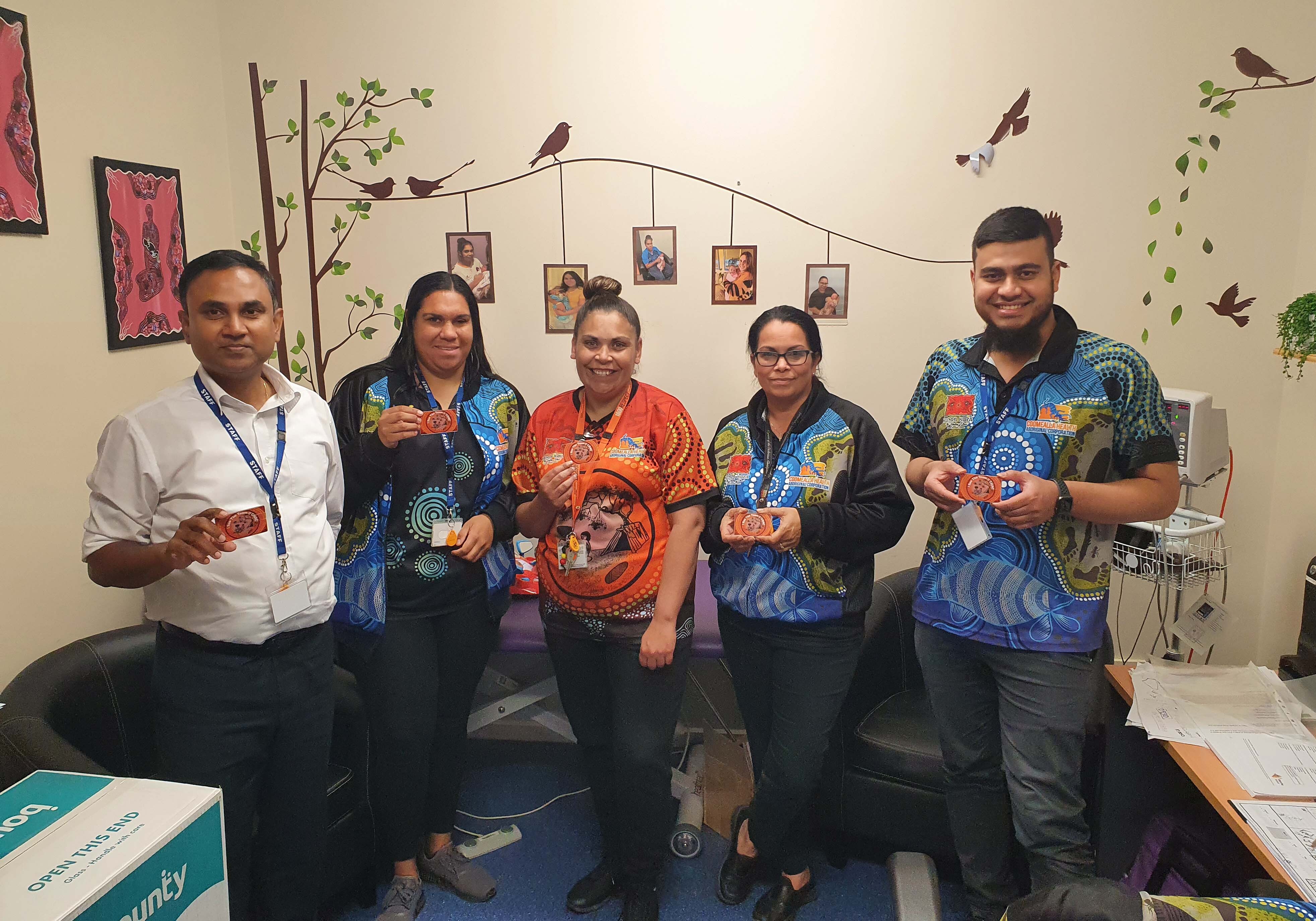This site may not work properly using older versions of Edge and Internet Explorer. You should upgrade your browser to the latest Chrome, Firefox, Edge, Safari, or any other modern browser of your choice. Click here for more information.
Your Stories
This is where we tell your stories, cover topical issues and promote meaningful initiatives.
Meet 2021 Collaborative Team Award Winners, the Midwifery Unit of the Coomealla Health Aboriginal Corporation
In the Far West region of New South Wales, Coomealla Health Aboriginal Corporation have been doing things differently. Midwife Debbie Towns discusses their innovative transition to a digital antenatal record, and the many benefits it has brought the community.
Team members include Dr Mainul Khan, Dr Nalin Fonseka, Zoe Andrews (Health Promotions Officer), Wendy Arney (Dietitian), Kiah Howard (Receptionist), Debbie Towns (Midwife), Robert Ritchie (Clinic Team Leader), Timmy Gordon (Aboriginal Mental Health Peer Support Worker), Guy Mitchell (Transport Officer), Justine Williams (Health Services Manager), and Michelle Terrick (Practice Nurse).
“We’re so excited,” says Midwife Debbie Towns. “This puts us on the map!”
The Aboriginal-led midwifery unit in the Far West region of NSW has approximately 2000 clients on its books, covering ground from “Robinvale across to Wentworth, up to Broken Hill and to the Mildura border.”
“We’re a pretty close-knit team. Everyone pulls their weight,” continues Ms Towns. “From the reception staff who make the process smooth and book you the appointment, to the team of doctors and Aboriginal Health Workers (AHW) who take your bloods and things like that; then to the midwife for antenatal and postnatal, and to the AHW who will go and visit clients in the community as well. We’ve also got an obstetrician that comes once a fortnight to the Dareton primary health building across the road.”
One of their major recent achievements includes transitioning to a digital antenatal record following community consultation.
“Ideas need to start from the grass roots, rather than coming from the top down,” Ms Towns said.
“We have a little card, or a wallet, that sticks to your mobile phone or similar, then your little USB card will go into there, so for the duration of your pregnancy, you can carry it with your phone. It’s called the CHAC Electronic Maternity Record (CEMR).
“The CEMR has been designed in line with the model of paperless clinical notes. The CEMR reduces the risk of transcribing errors as the originals are uploaded to the CEMR USB card.
“Our local community who are utilising our new CEMR find it extremely beneficial, as it’s up to date with modern technology; it fits in their wallets and purses.
“As a midwife for many years, one thing that has been an issue is that the maternity handheld record often gets misplaced or left at home. This new card has changed our clinical practice and ensures all client information is stored and on hand, ready to go, especially on those rare occasions when specialist follow-up is required – because the medical information that is needed to provide that further treatment/management is there ready to go.
“This CEMR Card also saves not only us here at CHAC but other organisations the time of requesting patient records, pathology results, and ultrasound reports.
“The CEMR includes subheadings for ease of locating patient information, a link to the CHAC website and a message from our CEO Summer Hunt.
“Ultrasounds images are uploaded at each gestation to show baby’s growth and promote family bonding. This CEMR also makes for a nice keepsake for our families.”
Ms Towns also identifies the enhanced privacy, the ability to sanitise the card, and the involvement of many individuals (including a local artist) as key benefits.
Do you know a team doing amazing work in rural or remote Australia? Nominate them for a CRANAplus Award when applications open.



